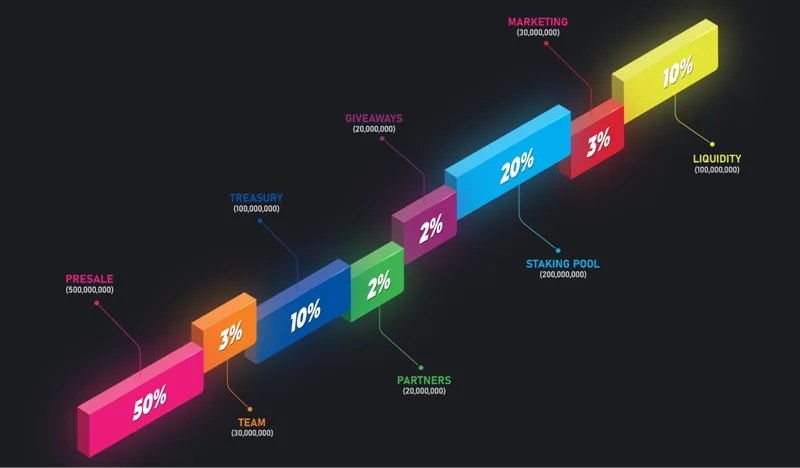In blockchain, the Gas Fee is the cost required to execute transactions or run smart contracts. The way blockchain works is similar to a computer; each operation (such as transferring funds or executing a contract) consumes a certain amount of computational resources. To compensate miners or validators for their work, the network requires users to pay a Gas Fee.

Basic Concept of Gas
- Gas: Each operation on the blockchain has a Gas value, indicating the amount of computation required to perform that operation. Different types of operations consume different amounts of Gas. For example, a simple transfer may require only a small amount of Gas, while a complex smart contract may need significantly more.
- Gas Price: The Gas price refers to the cost per unit of Gas, usually measured in gwei (1 gwei = 0.000000001 ETH). The Gas price is influenced by network congestion; the busier the network, the higher the Gas price typically is.
Gas Fee Calculation Formula
Total Cost = Gas Used × Gas Price (gwei)
For instance, if a transaction requires 21,000 Gas and the Gas price is 100 gwei, the total cost would be:
21,000 × 100 = 2,100,000 gwei (approximately 0.0021 ETH)
How to Convert Gas Fee to USDT
To convert Gas Fee from gwei to USDT, you need to understand how the Gas Fee is calculated and the current price of ETH. Below are the detailed conversion steps:
Understanding Units
- gwei: The unit used to represent Gas prices on the Ethereum network. 1 gwei = 0.000000001 ETH (i.e., 10⁻⁹ ETH).
- USDT: A stablecoin pegged to the US dollar, typically 1 USDT = 1 USD.
Assumed Parameters
Assume the current price of 1 ETH is 1,800 USDT, the Gas price is 50 gwei, and a simple ETH transaction requires 21,000 Gas.
Calculation Steps
- Total Gas Consumption:
- Total Gas Consumption = 21,000 Gas
- Calculate Total Gas Fee (in gwei):
- Total Gas Fee = Total Gas Consumption × Gas Price = 21,000 Gas × 50 gwei = 1,050,000 gwei
- Convert gwei to ETH:
- Total Gas Fee (ETH) = 1,050,000 gwei × 0.000000001 ETH/gwei = 0.00105 ETH
- Convert ETH to USDT:
- Total Gas Fee (USDT) = 0.00105 ETH × 1,800 USDT/ETH = 1.89 USDT
Difference Between gwei and USDT
- gwei: A unit used to represent Gas prices in the Ethereum network, making it easier for users to understand and set transaction fees.
- USDT: A stablecoin whose value is pegged to the US dollar, widely used in the crypto market as a medium for trading and value storage.
Summary of Differences
- Measurement Method: gwei is used to express Gas fees, primarily related to blockchains like Ethereum; USDT is used to maintain value stability.
- Usage: gwei is mainly associated with blockchain transactions, while USDT is used for trading, investment, and payments.

Role of Gas Fee
- Prevent Network Abuse: By introducing Gas Fees, blockchain networks can limit malicious user behavior and prevent spam transactions and attacks.
- Incentivize Miners/Validators: Miners or validators receive Gas Fees as rewards for processing transactions, incentivizing them to maintain the network's security and stability.
- Priority Management: Users can decide the priority of transactions based on the Gas Fee they are willing to pay; paying a higher Gas Fee can expedite transaction processing.
How to Optimize Gas Fee?
- Choose the Right Time: Submitting transactions during non-peak hours usually results in lower Gas prices.
- Use Contract Tools: Some tools and platforms offer functions to calculate and optimize Gas Fees, helping users choose the best transaction times and costs.
- Batch Transactions: If multiple small transactions are needed, consider combining them into a single transaction to reduce total Gas consumption.
Why Is It Not Free?
If transactions were free, malicious users could flood the network with meaningless transactions, leading to congestion and performance degradation. A fee mechanism effectively prevents such abuse and ensures smooth network operation.
When Does Gas Fee Start to Be Charged?
Gas Fees start to be charged when a user submits a transaction; whether it is a simple transfer or a complex smart contract execution, all operations are charged based on their Gas consumption.
Why Is It Called Gas Fee?
The term “Gas” originates from automotive fuel, representing the “fuel” needed to perform an operation. In blockchain, the Gas Fee is the cost required to execute transactions or run smart contracts, similar to how fuel powers a vehicle.
What Happens to the Gas Fee If the Transaction Fails?
If a transaction fails, the corresponding Gas Fee usually still needs to be paid because miners or validators have consumed resources to process that transaction. Although the transaction was unsuccessful, it still utilized the network's computational capacity. Different blockchains may have varying rules, but in most cases, Gas Fees are non-refundable.
Which Cryptocurrencies Incur Gas Fees During Transactions?
Gas Fees are primarily required on smart contract platforms like Ethereum. Additionally, many blockchains that support smart contracts (such as Binance Smart Chain, Polygon, Avalanche, etc.) also charge Gas Fees. In contrast, some traditional cryptocurrencies, such as Bitcoin, have transaction fees but do not use the concept of Gas.
Do Transactions of BTC Incur Gas Fees?
Transaction fees are incurred when trading Bitcoin (BTC), but they are not referred to as Gas Fees. The transaction fees for Bitcoin are paid to miners as compensation for processing and verifying transactions, with costs determined by network congestion and transaction complexity.
How Much Gas Fee Is Incurred for a Transaction of 1 ETH?
The Gas Fee for a transaction of 1 ETH depends on network congestion and the current Gas price. Typically, a simple ETH transfer requires about 21,000 Gas.
If the Gas price is 50 gwei, then:
Total Cost = 21,000 × 50 = 1,050,000 gwei (approximately 0.00105 ETH)
The specific Gas price can fluctuate, so the actual cost may vary.
The Future of Gas Fee
With the development of blockchain technology, many projects are exploring ways to reduce Gas Fees. For example, Layer 2 solutions (such as Optimistic Rollups and zk-Rollups) aim to transfer transaction processing off the main chain to reduce network congestion and transaction costs. Additionally, some emerging blockchains (like Solana and Polygon) also offer lower transaction fees, attracting a large number of users.
Conclusion
Gas Fees are an indispensable part of blockchain networks. Understanding their concepts and roles can help users conduct transactions and use smart contracts more effectively. With technological advancements, there may be more ways to optimize and reduce Gas Fees in the future, providing a more user-friendly experience. If you have any further questions about blockchain or Gas Fees, feel free to ask!
FAQ
Q: Does Gas Fee Affect Transaction Speed?
A: Yes, Gas Fee directly affects the processing speed of transactions. Paying a higher Gas Fee increases the likelihood of miners prioritizing your transaction, thereby speeding up the confirmation time.
Q: Can I Set a Cap on Gas Fee?
A: Yes. Many wallets and trading platforms allow users to set a cap on Gas Fee to prevent overpaying during network congestion. However, if the cap is set too low, the transaction may remain unprocessed for a long time.
Q: What Is the Historical Trend of Gas Fee?
A: The historical trend of Gas Fee is usually related to the level of network activity. In recent years, due to the rise of applications like DeFi and NFTs, Gas Fees have surged during certain periods, especially during peak network times.
Q: Are Gas Fees the Same on Different Blockchains?
A: The structure and standards for Gas Fees vary significantly across different blockchains. For example, Gas Fees on Ethereum are typically higher than those on Binance Smart Chain or Polygon, which generally offer lower transaction costs.
Q: How Can I Check the Current Gas Fee?
A: You can check the current Gas Fee through various online tools and websites, such as Gas Station or EthGasStation. These platforms provide real-time data to help users understand network conditions and recommended transaction fees.
Related Articles

What is SparkLend? A Beginner-to-Advanced Guide to Decentralized Lending Made Easy
SparkLend is a decentralized, non-custodial liquidity market protocol built on the Ethereum blockchain. Simply put, it functions like a bank without intermediaries, allowing users to borrow and lend d
June 26, 2025
What is sUSDS? How Do I Acquire sUSDS?
This guide will walk you through Sky Savings’ sUSDS and sUSDC—your gateway to earning yield with stablecoins while keeping your funds secure.Sky Savings: Your Journey to Stablecoin Yields Begins HereW
June 26, 2025
What is SparkLend? A Complete Guide from Beginner to Pro
SparkLend is a decentralized, non-custodial liquidity market protocol that allows users to participate as lenders or borrowers. Lenders provide liquidity to earn passive income, while borrowers can ta
June 24, 2025
What Exactly Does Spark Protocol Do? A Complete Guide
This guide will walk you through Spark Protocol — an innovative platform designed to tackle the long-standing issue of fragmented liquidity in the DeFi space. You'll learn how to earn yield, borrow as
June 24, 2025
RXS Token Trading Guide: From Presale to Uniswap – A Complete Walkthrough
This guide will walk you through the trading process of the RXS Token, from the restrictions during the presale phase to free trading on Uniswap, helping you trade securely and efficiently.1. Introduc
June 24, 2025
